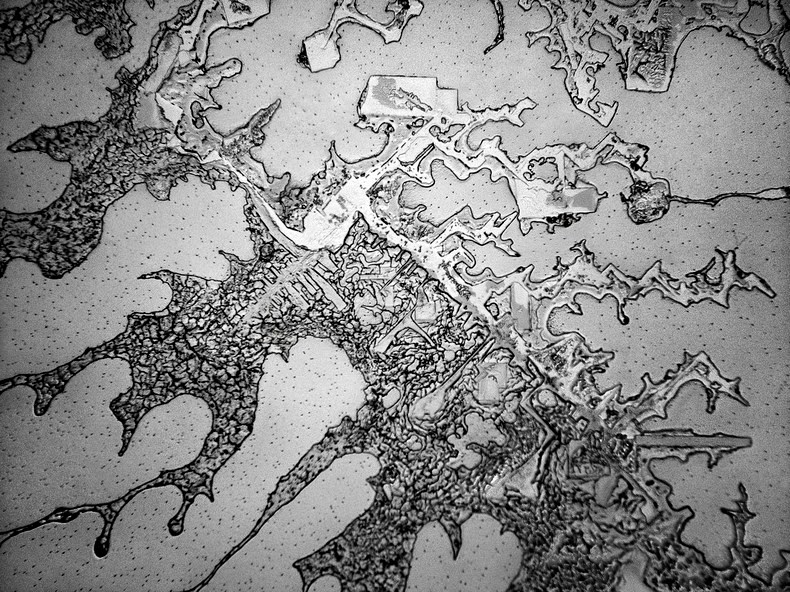Los Angeles-based photographer Rose-Lynn Fisher’s “The Topography of Tears” is a microscopic study of tears emitted during a range of emotional states and physical reactions. Using a Zeiss microscope with an attached digital camera, she captures the composition of tears enclosed in glass slides, magnified between 10x and 40x. The project began during a period of personal loss when she was shedding copious amount of tears. Instead of brushing them away, she decided to look at them under the microscope. She was surprised to discover that some of the tears actually looked like aerial shots. All the water, proteins, minerals, hormones, antibodies and enzymes in the tear mimicked the rivers and fields and buildings you see while flying several thousand feet in the air.

Tears of possibility and hope, photo credit ©Rose-Lynn Fisher
Eventually, she started wondering if a tear of grief look any different than a tear of joy, and how would they compare to, say, an onion tear. She was also curious to find out if men’s tears were different from women’s tears.
Soon her sample size grew as she tried to gather and document all three of the classified types of tears; basal or lubricating tears; reflex tears which your body secrets when it responds to an irritant like an onion; and crying or weeping tears, which relate to our emotions.
All tears contain a variety of biological substances suspended in salt water, but tears from each of the different categories include distinct molecules as well. Additionally, because the structures seen under the microscope are largely crystallized salt, the circumstances under which the tear dries can lead to radically dissimilar shapes and formations.
“There are many factors that determine the look of each tear image, including the viscosity of the tear, the chemistry of the weeper, the settings of the microscope, and the way I process the images afterwards,” she says.
Visit her website to see the rest of the images.
Also see: more objects under the microscope - pollen grains, alcohol, snow
Sources: Smithsonian / Wired



Comments
Post a Comment